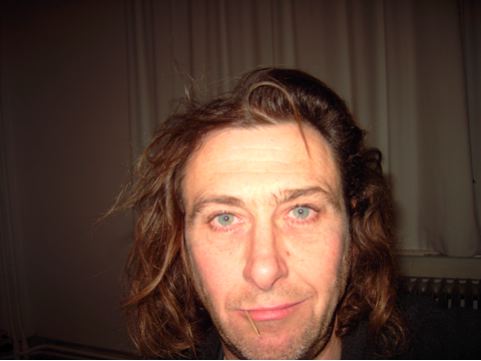

This is a photograph and a portrait. Who is he, and what is it about?
This is Piet, a friend of mine from Antwerp (Belgium). Piet is not an artist, but he is a good example for artists. He told me that he wanted to stay abroad for a longer period, but that he was not sure how and where to travel. I asked him to send me about ten pictures from his destination as an 'evidence' of his trip - without telling me where he has been. Piet agreed to the 'deal' and bought a digital camera especially for this purpose. This self-portrait was the first picture he took, in order to test the camera.
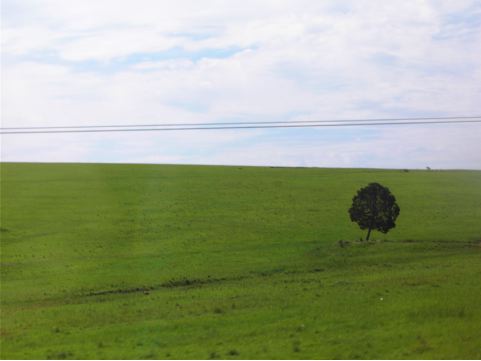
So you had arranged a 'deal'… - In a recent Re-Institutionalize project, you declared your own evening walk on a cemetery in Finland to be an exhibition. Now the event is even more 'remote', for the photographs were taken by someone who is not an artist. In what way is it art, then?
I think that the notion of a deal is crucial for a definition of art and of that what is not art. Everything can be recognized as art if the work succeeds in making a deal with the artworld. Yet there is a difference between 'being art' and 'being recognized as art'. Not to mention the problem how to determine relevant, interesting and good art. In this case I would say that I am speculating on art by making this deal with Piet. Like the other Re-Institutionalize projects, this one also takes place independently from any art institution and tries to generate art and art institutions "out of nothing". But to come back to the question, I think that this deal is an artistic deal, because it aims at giving the production of images a symbolic value. The artistic quality of these photographs mainly relates to a conceptual switch prior to their creation and perception. The photographs challenge to find out something specific; and the deal behind the pictures informs the spectator of an artistic strategy.
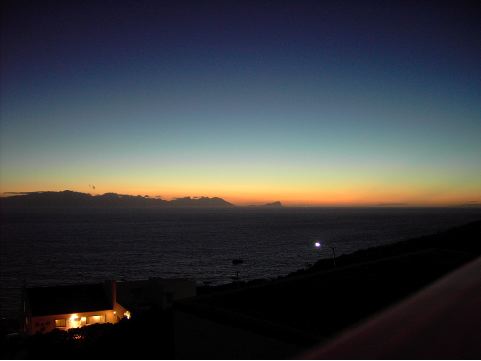
Has art disappeared in order to re-enter in disguise?
Of course the idea of disappearing in order to re-enter disguised is appealing to me. I think it's a good strategy, enabling art to express certain things again – romanticism, passion and idealism, for example –, without having to adapt to certain codes and clichés. This strategy might already be outdated, but I think that it's working pretty good in this particular case.

A hotel room, maybe? It's a hint, isn't it? Why did he take this picture, what do you think?
It‘s a backpackers’ place. I like the name "Cat and Moose". There is for sure a clear hint: that water is announced to be short in this place. I presume that Piet liked the name too and the very practical instructions how to save water. Actually, we have never really spoken about the pictures he sent me, so I don't know much more about them than you.
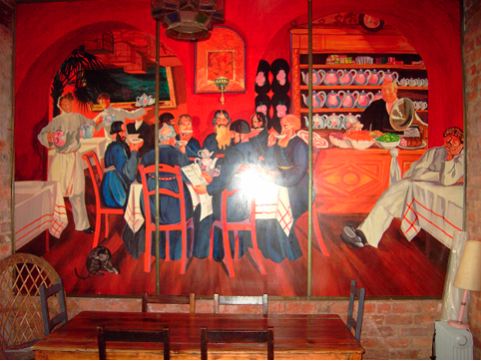
This picture is empty and very full, at the same time. That's quite vague, but presumably Piet intends to tell something. - Why don't you just pretend that you took the photographs? Then it would be art...
It's a strange painting, somehow 'oriental', but it looks wrong. And it doesn't really fit in with the elements in the room. I'm sure that there is a story behind this painting and behind the fact that it's there. I like this 'potential' in a picture. - But I totally disagree with your idea about authorship. It would be stupid to pretend that I took the pictures. Although it might be easier then to say that it's art – because a trained artist released the shutter –, it would be very bad art. Now it is much more challenging to consider this as art, exactly because the photographs have to be regarded from a totally different point of view.
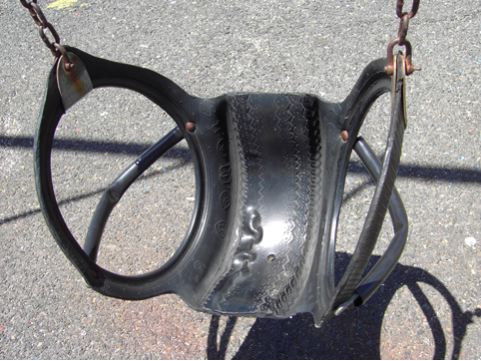
A single piece of a lonesome something: Someone offers what he has seen, for observation. I have a good reason to be occupied with that. If I can name it, it becomes a part of the world I am living in.
I agree with you that a gesture offering a personal experience to be shared with other people is important, but it needs more to attract my interest. I mean, a lot of people produce tons of snapshots and make hours of video recordings of their holidays, and nobody would claim that that's a reason to look at all of that. I think that this picture is interesting exactly because of the difficulty to name and understand the depicted object. The interest lies in the object itself, and the photograph is focused on it in a very efficient way. Even when you understand what you see and the way it was made, the object still remains interesting, and that’s a genuine quality, in my opinion.
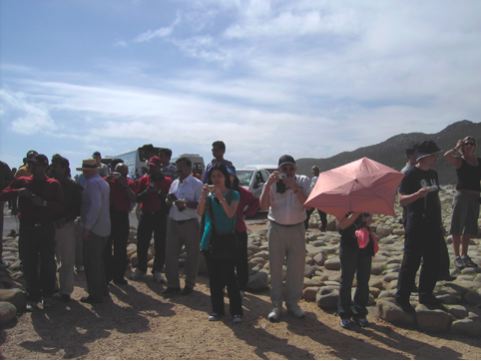
This is, presumably, a place where tourists are guided to take pictures. Oddly they seem to photograph the photographer... I feel as if I have seen it before. - The photographs are adequate to different categories: still life, portrait, landscape, etc., and they are 'psychological' in some way. My impression is that Piet took quite clever photographs on his journey, the way he realized the deal you set up.
I totally agree with you.
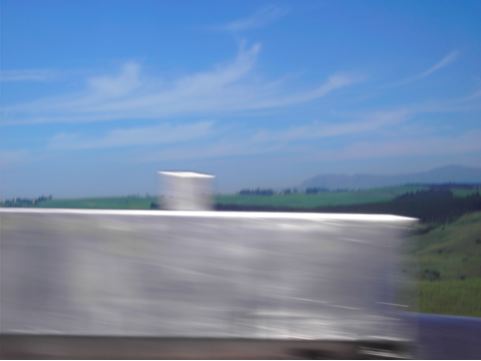
On the way. Moves fast. - Maybe we should talk about your idea of 'institutionalization' now. Is it coming into force as soon as the action is published and communicated within an artistic discourse?
This project seems to be really 'self-institutionalized'; from the beginning (the deal) to the end (communicating the project). I’m afraid there is no escape from this conclusion. The crucial moment was the deal I made with Piet, which resembles pretty much an agreement between an art institution and an artist. In this case I play the role of the institution and the curator, while Piet plays the role of the artist - whereas in reality I assume the role of an artist and Piet doesn't. I hear and read a lot of comments from very institutionalized artists and curators, saying that whether art is produced inside or outside art institutions has become totally irrelevant, and that the only relevant question is the question of the capability of art to transform society… To me, this sounds like self-indulgence. A bit like "now that we have succeeded in our careers we need higher goals and a quiet conscience to stick together" - a clever way to consolidate the existing power structures! That is not only a hypocrite attitude, it is also dangerous to pretend to ignore that institutions are instruments of power. Especially if you have the aspiration to transform society through art!
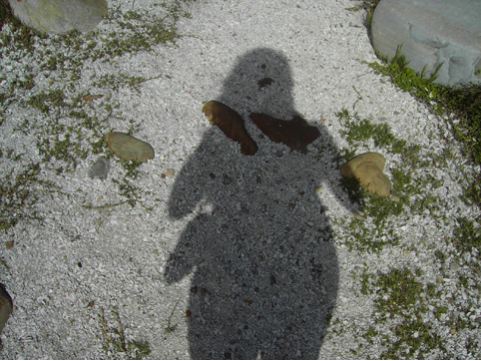
Let’s come back to the photographs… This one is strange, too. Somehow meaningful? But also very banal, almost nothing. Anywhere, any place on earth. The context is dissolved. Maybe there is an expectation that photographs have to be documentary in any case, that one is always able to know what they show, also when the pictures are poetical or mysterious or fake. - The shadow looks female, because of the curves, maybe a woman took this photograph, or Piet wants you to believe that?
The context is quite dissolved, nevertheless the pictures are not indifferent. They seem to be aware of their function, and this makes them interesting. In this photograph it is curious how the two stones in the shadow seem to be alive. And you're right about the shadow: Actually Piet's girlfriend Sylvie joined the trip, and this must be her shadow. Maybe we should consider the possibility that these photographs might have been taken in fact mostly by Sylvie and not by Piet…
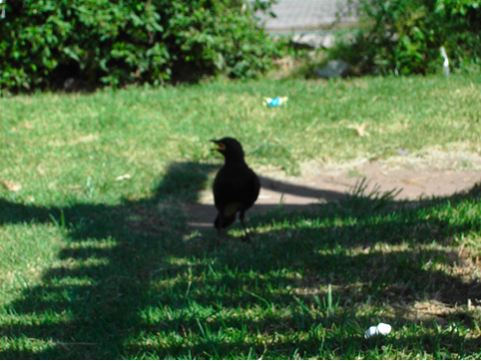
Birds in the afternoon make me feel melancholic. In the morning they make me feel happy. Long shadows, a short day. Is there anything we have not mentioned yet?
There is for sure a lot that we haven't mentioned yet, but it is amazing that we have already talked about so many topics! Did it occur to you that Piet might have sent me just some found pictures by e-mail, and that he might not have been gone away at all? Naturally, I don't think so, I trust him.

The character of a photography can be transformed easily by the viewer’s mind. Since you publish these photographs without knowing much about them, they remain something very private. At the same time, they are charged up with a specific meaning that we try to decipher. But that's just in our imagination then, isn't it?
Yes, exactly. And that's what all these photographs are about: imagination – and how our imagination creates meaning.
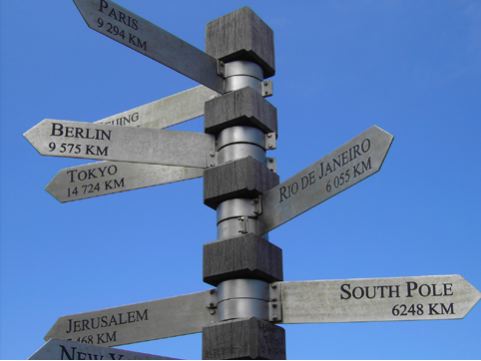
The place where Piet was staying is exactly defined here. But I can't figure out where this signpost stands… Information doesn't help, and, maybe, it wouldn't be important at all?
I appreciate that Piet sent me this last photograph to give us a chance to figure out the mystery. But my geographical knowledge is too bad, and somehow I also like the idea of not knowing more. Like this, all these photographs keep their potential, and my interest in them remains intact.
Interview: Heike Wetzig & Kristofer Paetau, june 2005
Re-Institutionalize # 07: Piet‘s voyage
Thank you: Piet Strauven & Sylvie Laenen